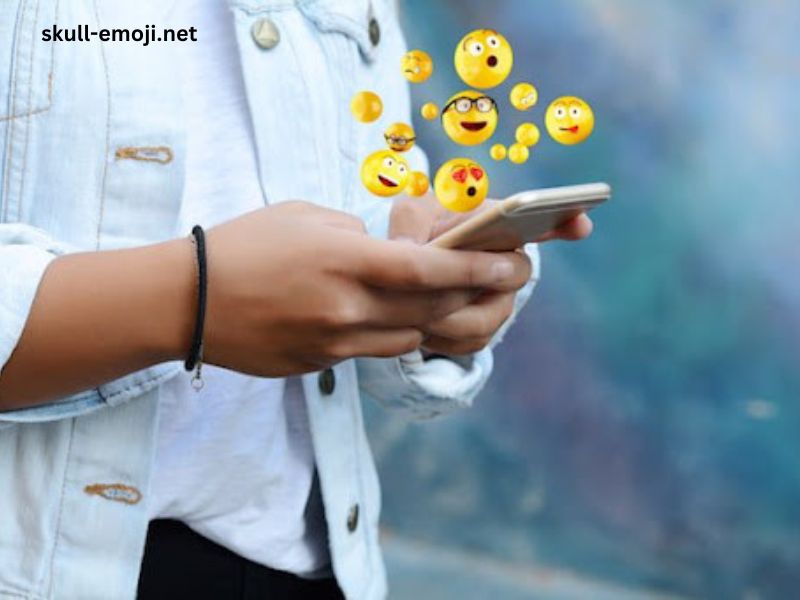In the age of digital communication, emojis have become a universal language, enabling people to express emotions and sentiments in ways that words often cannot. Among the myriad of emojis available, one that has garnered particular attention is the upside-down smiley face emoji (🙃). This seemingly simple icon can convey a range of meanings, often depending on the context in which it’s used. In this article, we will explore the origins of the upside-down smiley face, its various interpretations, and its role in modern communication.
The Origins of the Upside Down Smiley Face
The upside-down smiley face emoji was added to Unicode in 2010 as part of Unicode 6.0. This version of the emoji set aimed to enhance digital communication by providing users with more expressive options. The upside-down smiley face, officially known as “upside-down face,” was likely inspired by the traditional smiley face, which has long been associated with positivity and cheerfulness.
However, the inverted version introduces an element of irony and playfulness. Its creation aligns with the broader trend of using emojis to depict complex emotions and social nuances that are often difficult to articulate through text alone.
Interpretations of the Upside Down Smiley Face
1. Irony and Sarcasm
One of the primary uses of the upside-down smiley face is to indicate irony or sarcasm. In conversations where a person wants to convey that they’re not being entirely serious or that a statement should not be taken at face value, this emoji serves as a visual cue. For example, someone might say, “I just love waiting in long lines for hours 🙃.” In this context, the emoji helps to underscore the sarcastic tone.
2. Playfulness and Humor
The upside-down smiley face also embodies a sense of playfulness. Its unconventional orientation can signify that the sender is in a light-hearted mood or is trying to inject humor into a conversation. For instance, a person might share a lighthearted joke or a silly meme accompanied by the emoji to emphasize their intention of keeping things fun and jovial.
3. Confusion or Uncertainty
In some cases, the upside-down smiley face can indicate confusion or a lack of understanding. When someone encounters an awkward or perplexing situation, using this emoji can express their bewilderment in a humorous way. For example, if someone is trying to understand a complicated set of instructions, they might say, “I think I got it, but not really 🙃.” Here, the emoji encapsulates their mixed feelings about the situation.
4. Subversion of Expectations
The upside-down smiley face can also be employed to subvert expectations. It’s a way to challenge the norm of positive communication often associated with standard smiley faces. For instance, in a conversation about a negative experience or a tough situation, the emoji might be used to suggest that the person is coping with humor rather than despair. This can be seen in phrases like, “Just got dumped, but hey, it’s all good 🙃.”
5. Self-Deprecation
Another notable interpretation is self-deprecation. When individuals want to poke fun at themselves or acknowledge a personal flaw, the upside-down smiley face can be an effective way to do so. For example, someone might share, “I forgot my own birthday again 🙃,” using the emoji to convey both embarrassment and a sense of humor about their forgetfulness.
6. Ambivalence
The upside-down smiley face can also express ambivalence or mixed emotions. When someone feels both positive and negative about a situation, this emoji can encapsulate that duality. For instance, in discussing a challenging but rewarding project, a person might say, “This project is a nightmare, but it’s so fulfilling 🙃.” The emoji signals the complexity of their feelings.
Cultural Context and Variability
The meaning of the upside-down smiley face is not universally fixed; it can vary significantly based on cultural context, personal experience, and the nature of the conversation. For instance, in some cultures, humor may be expressed differently, and the emoji might not carry the same implications. Additionally, generational differences can influence how emojis are interpreted, with younger users often embracing more nuanced or ironic uses.
In a broader context, the upside-down smiley face can also reflect changing social dynamics. As digital communication continues to evolve, the ways in which people express emotions online have become more complex. The upside-down smiley face symbolizes this shift, highlighting the need for more intricate emotional expression in a medium that often feels impersonal.
The Upside Down Smiley Face in Popular Culture
The upside-down smiley face has made its mark beyond just casual texting; it has seeped into popular culture as well. From memes to social media posts, its versatility has made it a favorite among creators looking to add a twist to their content. Whether it’s being used in ironic commentary on social issues or in relatable humor about everyday life, the emoji’s presence is undeniable.
Social media platforms like Twitter and Instagram are rife with posts that employ the upside-down smiley face to convey a myriad of emotions. Influencers and content creators often utilize this emoji to connect with their audience in a relatable way, capturing the complexity of human emotion in a single character.
How to Use the Upside Down Smiley Face Appropriately
While the upside-down smiley face can be a fun and versatile tool in communication, it’s essential to use it judiciously. Here are a few tips for using the emoji effectively:
- Know Your Audience: Consider the relationship you have with the person you’re communicating with. If they are familiar with the emoji’s implications, feel free to use it. If not, it may lead to confusion.
- Context is Key: Always pay attention to the context in which you’re using the emoji. It can easily be misinterpreted if the surrounding text doesn’t align with its usual meanings.
- Avoid Overuse: Like any expression, moderation is important. Using the upside-down smiley face too frequently can dilute its meaning and impact.
- Be Mindful of Tone: If the conversation is serious, introducing a playful or sarcastic emoji might not be appropriate. Gauge the tone of the discussion before adding the emoji.
- Stay Current: Emoji meanings can evolve over time. Stay informed about how different demographics and cultures interpret emojis to ensure your message is understood as intended.
Conclusion
The upside-down smiley face emoji serves as a fascinating example of how digital communication continues to evolve, providing users with a nuanced way to express a range of emotions. From irony and humor to confusion and self-deprecation, this emoji encapsulates the complexities of modern interactions. As language and communication continue to develop in the digital age, the upside-down smiley face remains a vibrant symbol of our shared human experience—an icon of playfulness amidst the often serious nature of our daily lives. Whether used to lighten the mood, convey sarcasm, or express mixed feelings, the upside-down smiley face is here to stay, adding depth and personality to our virtual conversations.



